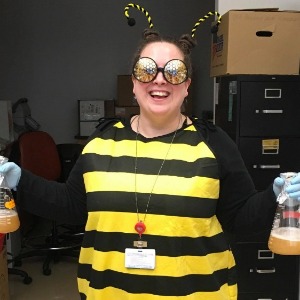Oct 08, 2019
BCA Assay for protein quantification
- 1Children's Hospital of Philadelphia;
- 2Center for Childhood Cancer Research
- Diskin Lab-CHOPTech. support phone: +12674253160 email: conkritek@email.chop.edu

Protocol Citation: Karina L Conkrite 2019. BCA Assay for protein quantification. protocols.io https://dx.doi.org/10.17504/protocols.io.6n5hdg6
License: This is an open access protocol distributed under the terms of the Creative Commons Attribution License, which permits unrestricted use, distribution, and reproduction in any medium, provided the original author and source are credited
Protocol status: Working
We use this protocol and it's working
Created: August 20, 2019
Last Modified: October 08, 2019
Protocol Integer ID: 27069
Keywords: Protein, BCA, quantification
Attachments
Materials
MATERIALS
Pierce BCA Protein Assay KitThermo Fisher ScientificCatalog #23225
96-Well Microplate Flat Bottom non-sterile Polystyrene Clear 10/Pack 100/Casegreiner bio-oneCatalog #655101
Use provided 0.2% BSA for creating a standard curve: Dilute amount necessary for the assay 1:2 using lysis buffer
Label tubes (1.5 mL Eppendorf) for standards.
Final Conc ug/mL Volume 0.1% BSA Volume buffer
Standard (ug) Volume 0.1% BSA (uL) Volume buffer(uL)
0 0 20
2 2 18
4 4 16
6 6 14
8 8 12
10 10 10
15 15 5
20 20 0
Add appropriate amount of Lysis Buffer to all tubes for the standard curve, following chart above.
Label tubes for samples.
Keeping all protein on ice throughout, use 3 uL/ sample + 17 uL Lysis Buffer for a total volume of 20 uL.
Add diluted BSA to standard tubes last, before adding working reagent.
To each sample and all standards, add 1 mL Working Reagent (comprised of [1 mL Reagent A + 20 uL Reagent B] x number of samples + 10% extra for error). Mix well.
Place tubes in 37° C incubator for 30 minutes to react.
3m
Cool samples to room temp.
1m
Aliquot 200 uL from each tube to a well of a clear, 96-well plate. This can be done in triplicate if desired.
Read on BCA program on GloMax plate reader at λ = 562 nm
Use values from BSA standards to create standard curve. Can be done in Excel, Statmost, or GraphPrizm. Seeking R2 value as close to 1 as possible. Ensure all your samples are within the standard curve range. If not, need to be redone.
Use the resultant y=mx+b equation to quantify the amount of protein in each sample. Dividing by 3 will give you your protein concentration per uL.

